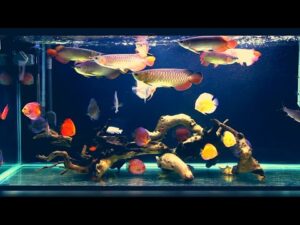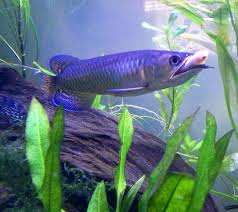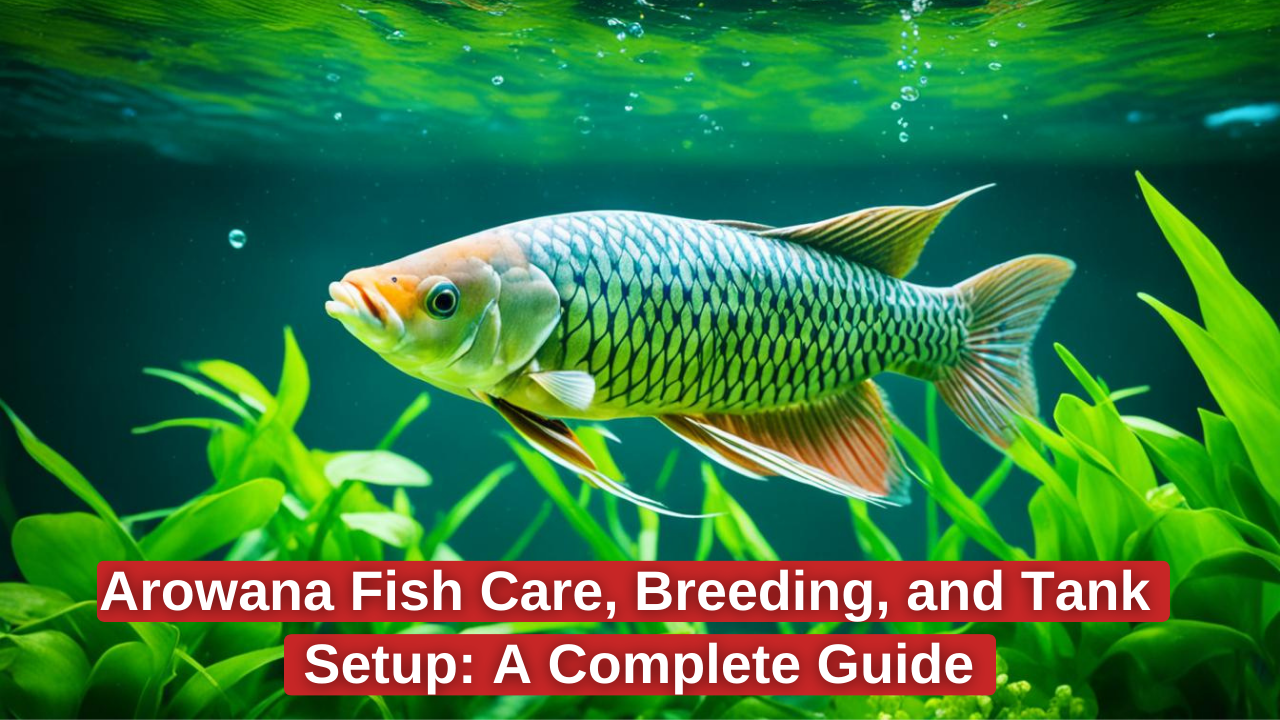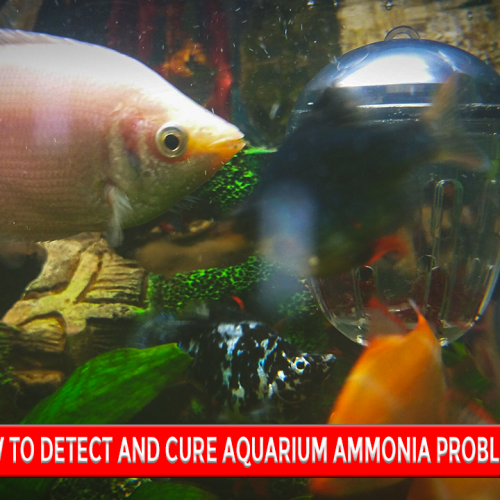They are truly beautiful, graceful fish and have been termed “dragon fish” due to the elongated bodies and shimmery scales. So, keeping an Arowana can be a complete fulfilling experience but requires specific knowledge on its care, breeding, and the setup in the tank so that thriving can be expected. It’s all there: knowing everything you want to have to set up the habitat of Arowanas; know how to care properly for them, and therefore understand the process of their breeding.
1. Familiarization with Arowanas and Their Tank Requirements
 Arowanas are an aquatic species of fish from rivers and lakes in South America, Asia, and Australia. They are an active, large fish that demands much space to swim around and grow. Because of their ability to jump out of the water, the tank setup must be very secure.
Arowanas are an aquatic species of fish from rivers and lakes in South America, Asia, and Australia. They are an active, large fish that demands much space to swim around and grow. Because of their ability to jump out of the water, the tank setup must be very secure.
- Tank Size: Arowanas can reach 3 feet in size, so they need a very large tank, which is at least 150-200 gallons.
- Water Quality: They are kept in clean, warm water at 75-82°F and pH 6.0-7.0.
- Filtration: Because of their size and diet, there must be a powerful filter in place to keep up with the high bioload and maintain good water quality.
2. Arowana Tank Setup Essentials
More than just water quality, creating an ideal environment for Arowanas is not that simple. Several little details can go along in keeping them comfortable:
- Tank Cover: Arowanas are known jumpers. Therefore, a very tight cover or lid is a requirement.
- Lighting: The low to moderate lighting set up is good because it is going to provide the right effects of simulating its natural habitat.
- Decorations and Substrate: This should be minimal with no sharp decoration that may hit their fins. Sandy or fine gravel substrate is best to use.
3. Feeding Arowanas: Diet and Nutrition
 Arowanas are carnivorous fish and must be fed with a high-protein diet. Suitable nutrition helps to support them for growth, colors, and energy levels.
Arowanas are carnivorous fish and must be fed with a high-protein diet. Suitable nutrition helps to support them for growth, colors, and energy levels.
- Diet: Arowanas must be fed with a diet of live or frozen foods such as shrimp, worms, and small fish. High-quality pellets are acceptable for supplementary feeding.
- Feeding Schedule: For juveniles, feed them twice a day and once daily for adults. AVOID OVERFEEDING FOR WATER QUALITY MANAGEMENT.
- Vitamins and Supplements: Sometimes giving vitamin-enriched foods or supplementations can help the fishes stay healthy.
4. Breeding Arowanas: What to Expect
Breeding Arowanas is not easy but surely possible if one has his proper setup and patience with it. Arowana is a mouth-breader. It incubates in its mouth for protection until ready to fend for themselves and their young ones.
- Breeding Pair: A mature pair is needed, and it is better to start with a large tank since breeding increases their activity level.
- Courtship and Spawning: Arowanas court through a complex dance. Once the female lays eggs, the male fertilizes them and carries them in his mouth.
- Raising Fry: After about 50 days, the male will release the fry. At this stage, separate them from adults and provide a suitable diet of brine shrimp and other small, nutritious foods.
5. Common Health Issues and Preventive Care
Arowanas are prone to some diseases, especially if water quality or diet is compromised. Knowing the signs of common health problems can help you address them early.
- Drop Eye: This is usually caused by Arowanas looking downward due to improper nutrition or injury. They should be regularly exercised and fed with good quality food.
- Ich and Other Parasites: These are the most common diseases in freshwater fish. The affected fish should be treated with anti-parasitic medication, and proper water conditions should be maintained to prevent outbreaks.
- Injuries: As these animals are active swimmers they can sometimes get injuries as a result of rubbing them against the tank decoration. Use smooth surfaces, in addition to keeping your aquarium uncluttered with ornaments.
Conclusion:
Arowana is quite a unique fish to maintain, and it is worth the experience, requiring great dedication in terms of caring and managing the tank. From setting up the environment to understanding their dietary needs and breeding process, all aspects play a role in their health and beauty. Enjoying the beauty and elegance of Arowanas in your aquarium for many years with commitment and proper care.
FAQs (frequently-asked questions)
You’re going to need at least a 150-200gallon tank, larger preferred, especially for older or larger Arowanas.
Yes, but just with other large, nontemperamental fishes. No small fish for the Arowana would view as food.
Partial change of water (20-30%) per week is just enough to maintain the level of water quality. If properly cleaned and filters run regularly, that’s quite sufficient.
Arowanas are extremely difficult to breed under captive conditions and need special environment and a mature mating pair.
Arowanas can survive up to 15-20 years, depending on proper care and maintenance.




